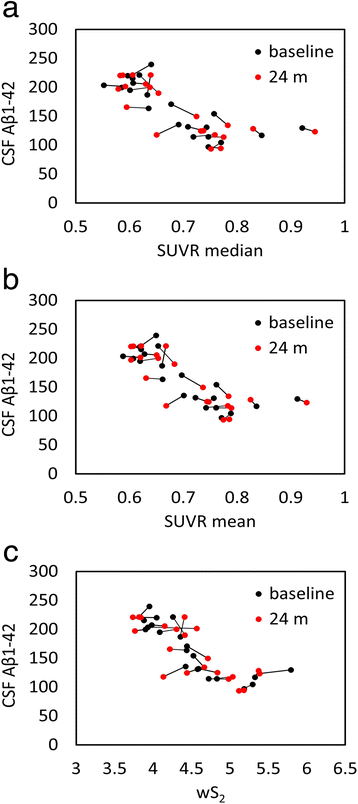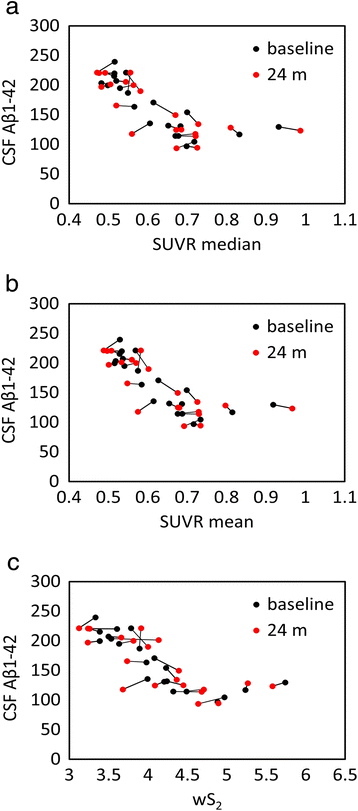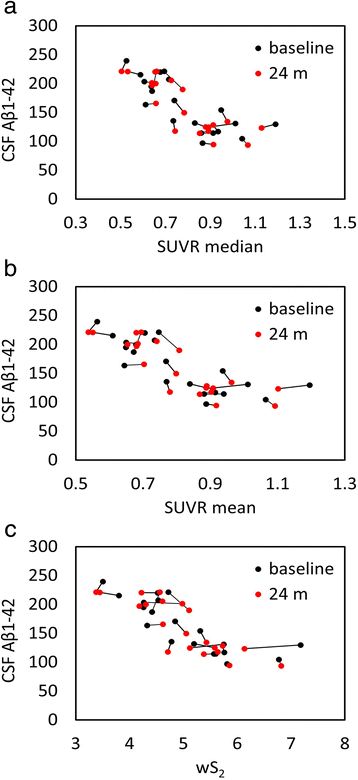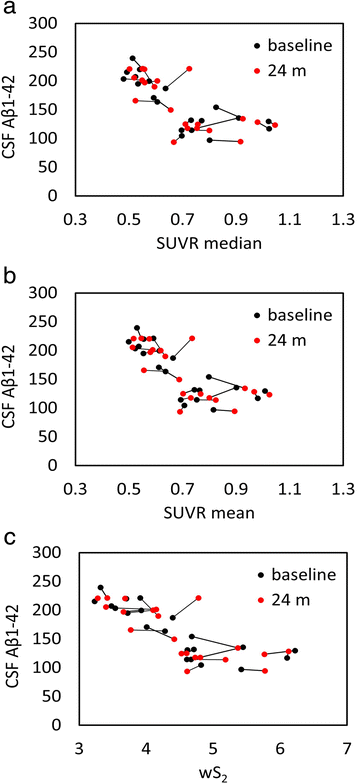Reference tissue normalization in longitudinal (18)F-florbetapir positron emission tomography of late mild cognitive impairment
- PMID: 26768154
- PMCID: PMC4714472
- DOI: 10.1186/s13195-016-0172-3
Reference tissue normalization in longitudinal (18)F-florbetapir positron emission tomography of late mild cognitive impairment
Abstract
Background: Semiquantitative methods such as the standardized uptake value ratio (SUVR) require normalization of the radiotracer activity to a reference tissue to monitor changes in the accumulation of amyloid-β (Aβ) plaques measured with positron emission tomography (PET). The objective of this study was to evaluate the effect of reference tissue normalization in a test-retest (18)F-florbetapir SUVR study using cerebellar gray matter, white matter (two different segmentation masks), brainstem, and corpus callosum as reference regions.
Methods: We calculated the correlation between (18)F-florbetapir PET and concurrent cerebrospinal fluid (CSF) Aβ1-42 levels in a late mild cognitive impairment cohort with longitudinal PET and CSF data over the course of 2 years. In addition to conventional SUVR analysis using mean and median values of normalized brain radiotracer activity, we investigated a new image analysis technique-the weighted two-point correlation function (wS2)-to capture potentially more subtle changes in Aβ-PET data.
Results: Compared with the SUVRs normalized to cerebellar gray matter, all cerebral-to-white matter normalization schemes resulted in a higher inverse correlation between PET and CSF Aβ1-42, while the brainstem normalization gave the best results (high and most stable correlation). Compared with the SUVR mean and median values, the wS2 values were associated with the lowest coefficient of variation and highest inverse correlation to CSF Aβ1-42 levels across all time points and reference regions, including the cerebellar gray matter.
Conclusions: The selection of reference tissue for normalization and the choice of image analysis method can affect changes in cortical (18)F-florbetapir uptake in longitudinal studies.
Figures









References
-
- Sperling RA, Aisen PS, Beckett LA, Bennett DA, Craft S, Fagan AM, et al. Toward defining the preclinical stages of Alzheimer’s disease: recommendations from the National Institute on Aging-Alzheimer’s Association workgroups on diagnostic guidelines for Alzheimer’s disease. Alzheimers Dement. 2011;7:280–92. doi: 10.1016/j.jalz.2011.03.003. - DOI - PMC - PubMed
Publication types
MeSH terms
Substances
Grants and funding
LinkOut - more resources
Full Text Sources
Other Literature Sources
Medical

